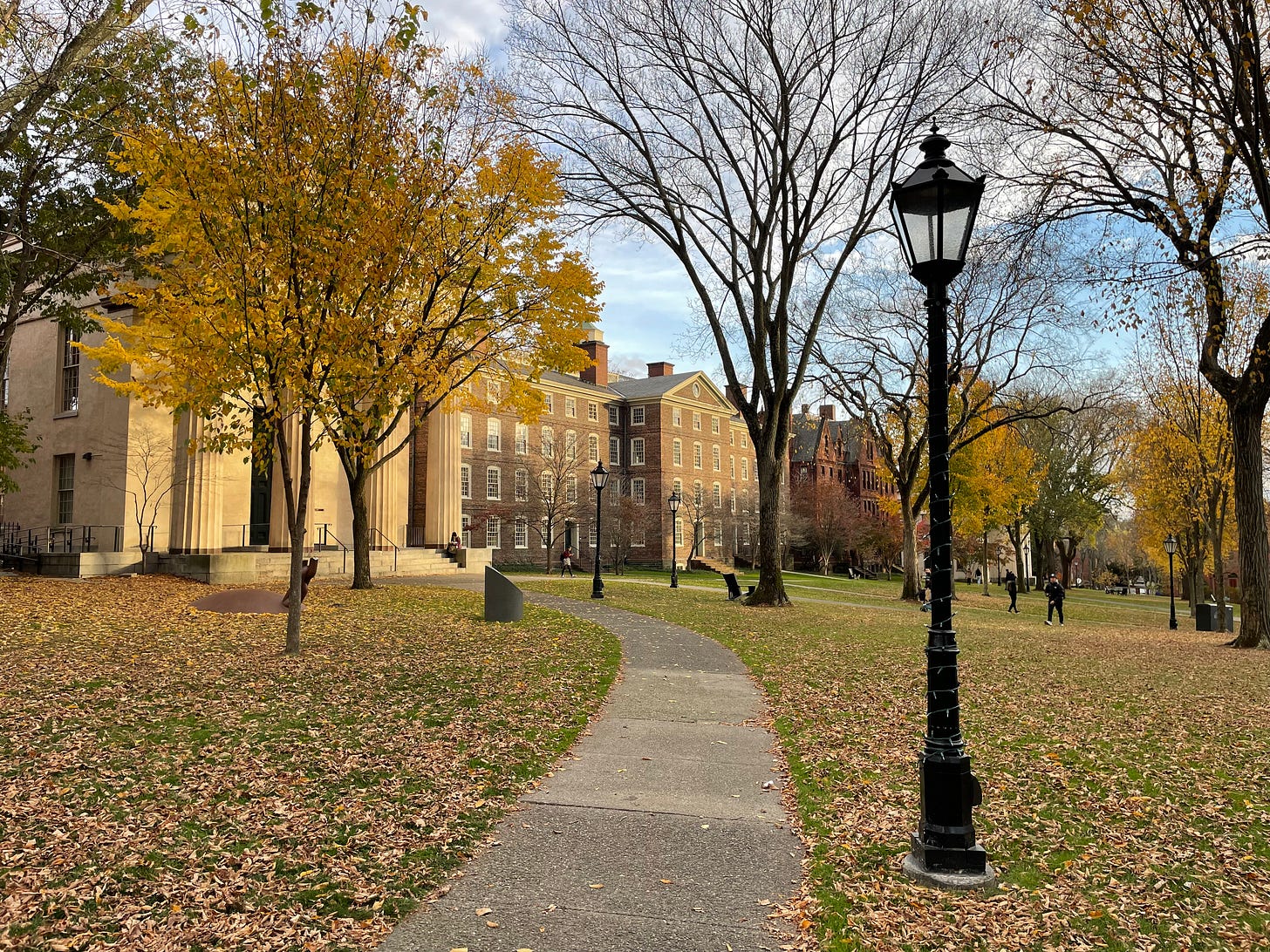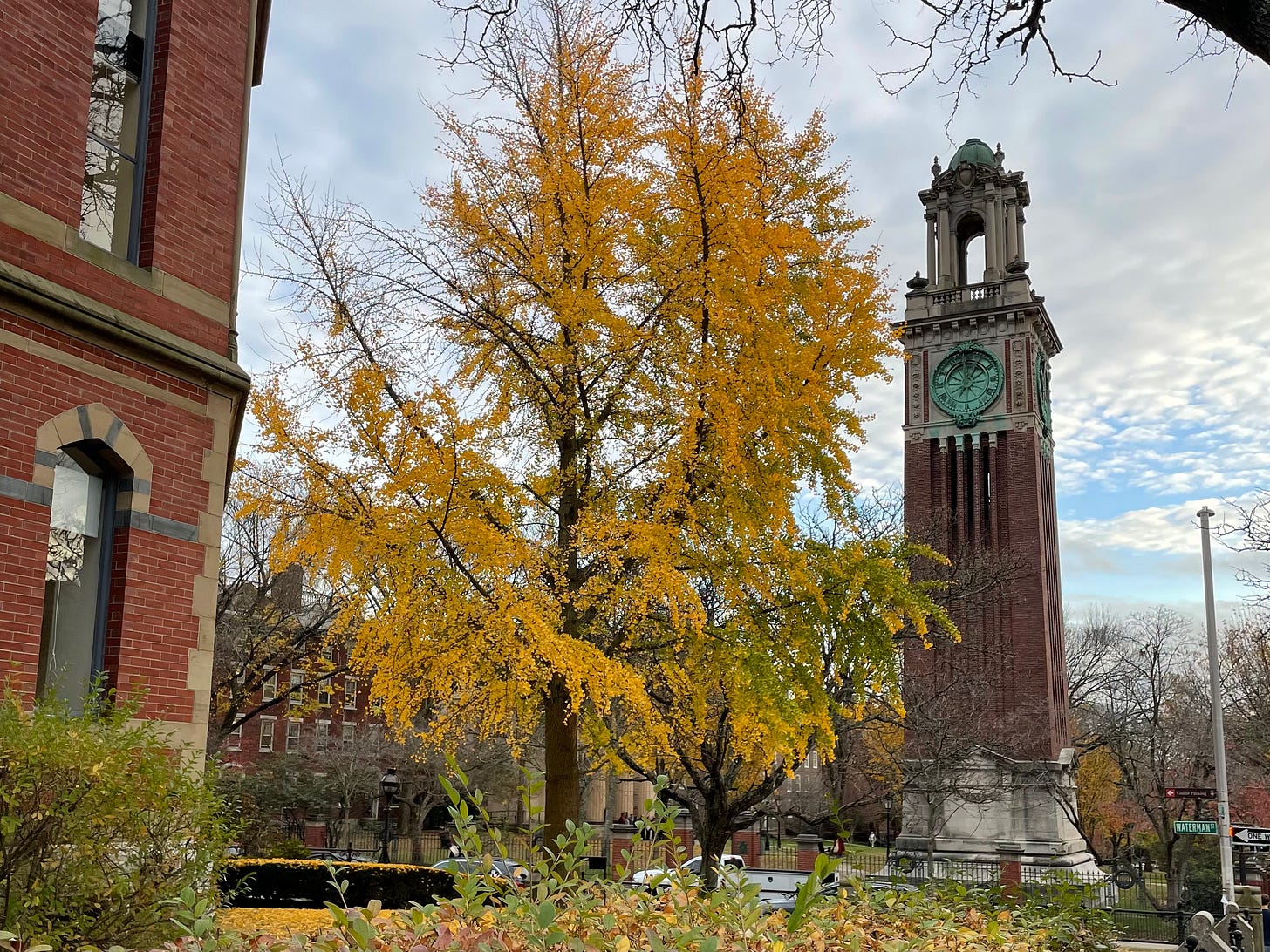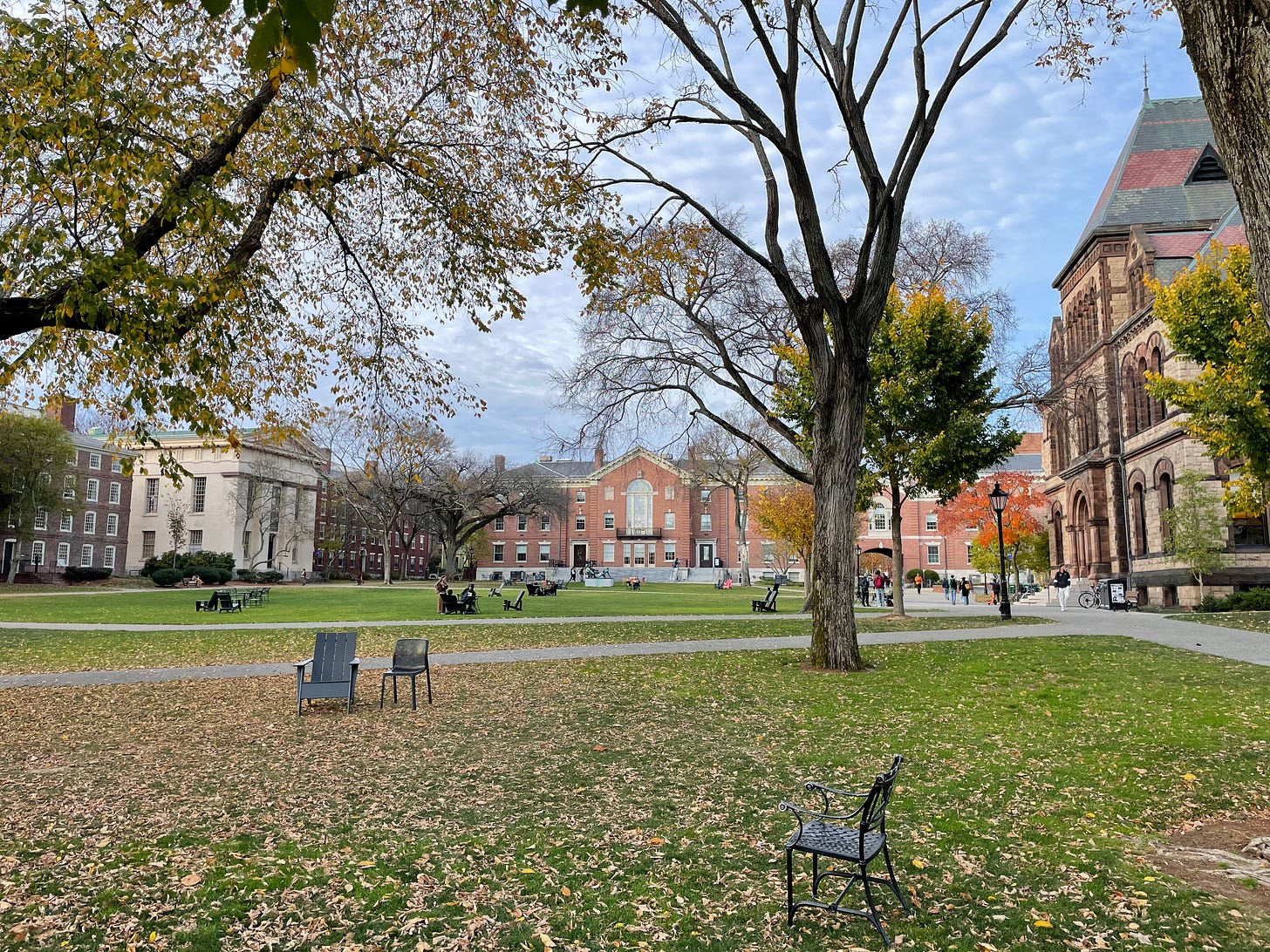Last week I visited Providence, Rhode Island, and had the opportunity to tour Brown University on a stunning autumn day.
Tributes and memorials are common on college campuses since most schools rely at least to some extent on wealthy individuals to fund infrastructure projects. Schools can be named after benefactors too, which is the case for Brown. The institution’s name was changed from Rhode Island College to Brown University in 1804 following a $5,000 donation from Nicholas Brown Jr., who was one of many members of the Brown family to play an instrumental role in the founding and funding of the institution. Another was his uncle, John Brown, whose home in Providence is a National Historic Landmark and museum.
A museum-mausoleum and a campanile
I didn’t have an agenda for what I intended to see at Brown, just walked around campus. Two buildings that ended up catching my eye turned out to be memorials for Nicholas Brown Jr.’s granddaughters, sisters Annmary Brown Hawkins and Carrie Mathilde Brown Bajnotti.
I saw the Annmary Brown Memorial first and stopped to take a picture of because it reminded me of a mausoleum. Turns out, it is one! The building, constructed between 1903 and 1907, houses exhibits of American and European painting as well as a sword collection. Annmary and her husband, General Rush C. Hawkins, are interred in a crypt inside the building.
The memorial to Carrie Mathilde Brown Bajnotti is a campanile clock tower commissioned by Carrie’s husband, Paul Bajnotti, an Italian count. Erected in 1904, it’s referred to as the Carrie Tower.
Carillon bells once played from the tower, but they are no longer operational. Even without their sound, the structure stands as a powerful testament to Paul Bajnotti’s love for his wife who passed away before him. Above the doorway is a verse from Song of Songs in the Bible: love is strong as death.
Another memorial across the lawn
I stumbled upon the Carrie Tower on my way to find the Brown University Slavery Memorial. Both are located on the campus’s Quiet Green.
I was aware that Brown has set the standard for how university’s research their historical affiliation with slavery, and I was eager to see how they integrated their findings from their groundbreaking 2006 report into the memorial landscape.
The sculpture by artist Martin Puryear shows a broken iron chain rising from a partially buried iron ball. According to Brown’s webpage about the memorial, this is meant to represent “a move toward infinite freedom even as the weight of history remains half-buried.”
A stone pedestal nearby contextualizes the piece:
This memorial recognizes Brown University’s connection to the trans-Atlantic slave trade and the work of Africans and African-Americans, enslaved and free, who helped build our university, Rhode Island, and the nation.
In 2003 Brown President Ruth J. Simmons initiated a study of this aspect of the university’s history. In the eighteenth century slavery permeated every aspect of social and economic life in Rhode Island. Rhode Islanders dominated the North American share of the African slave trade, launching over a thousand slaving voyages in the century before the abolition of the trade in 1808, and scores of illegal voyages thereafter.
Brown University was a beneficiary of this trade.
Who built this?
Outside of John Brown’s house in Providence, which was constructed between 1786 and 1788, is an interpretive placard with the heading, “Who Built John Brown’s House?” The sign details how John and his brothers held people in slavery and mentions that it is likely that nearby enslaved laborers were leased to build the house.
We often attribute credit for a structure to the person whose capital is behind it (e.g., John Brown built his house between 1786 and 1788), but it’s worth remembering the role of laborers, whether enslaved or free, in creating infrastructure. A university’s history becomes much richer when you consider all the people who had a hand in constructing it, not just those whose names appear above doorways.












What a lovely fall day! AnnMary’s mausoleum houses art & swords? How unique.
I especially like the sculpture's point about the hidden half of our history. Thank you for sharing this story.